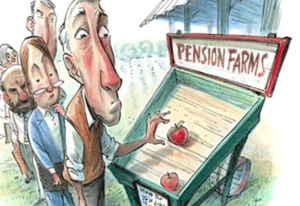Dropping Out: Why Students Drop Out of High School and What Can Be Done About It
By Russell Rumberger
(Harvard University Press, 400 pp., $35)
“Russ Rumberger has written the definitive book on school dropouts”, says my distinguished colleague and friend, Jack Jennings. In fact, I would go further: it is not only definitive, but positively masterful in its treatment of a vitally important subject which is frequently lost in the shuffle.
It goes almost without saying that high schools in general constitute the most dysfunctional element in American pre-collegiate education. But not everyone is aware of the gravity of the dropout situation. To quote directly from the book’s introduction, “…the U.S. Census estimates that in October 2010, there were about 28 million dropouts. Or expressed differently, 4% of all students grades 8-12 dropped out during the academic year 2008-2009”, the vast majority being minority students from urban school districts. And while there is some difficulty in validating these statistics, there is absolutely no doubt about the gravity of the situation. Dropping out is far more serious in the U.S. than in most other highly developed countries.
But Russ Rumberger’s book does much more than cite pertinent facts and figures. It explains why the dropout rate, despite occasional exhortations to the contrary by various blue-ribbon commissions, is actually increasing all the time, ensuring the persistence of the so-called “achievement gap,” to say nothing of the extraordinarily deleterious effects of the economic, social and cultural aspects of this phenomenon, all of which are carefully delineated in painstaking detail.
Unlike many academics, the author not only analyzes the problem from every possible point of view, but also outlines cogent recommendations which directly bear on the problem. Following up on the efforts of the National Governors Association, Russell Rumberger has used his home state of California to develop a national prescription:
1) fix the accountability system of schools generally;
2) collect and report more useful data on dropouts;
3) develop high school reform standards and create lighthouse districts to implement them;
4) undertake middle school reform;
5) make strategic investments in proven methods of high school dropout prevention;
6) reexamine high school requirements.
Additionally, the author favors high schools (both charter and otherwise) that are in the reform mode – schools whose curricula challenge students and are designed to nurture skills pertinent to the technological needs of a society for which the old factory model of “one size fits all” does not work any more. These schools could be early college high schools where students take community college courses or so-called Big Picture learning schools which promote relevant and authentic learning through individualized instruction and workplace internships.
In other words, Russell Rumberger’s prescriptions, if heeded, would be truly revolutionary. This fact alone should make this volume required reading for any serious student of school reform. His treatment is exhaustive, his writing style energizing, his message urgent and his analysis powerful. I recommend it highly.
-A. Graham Down




